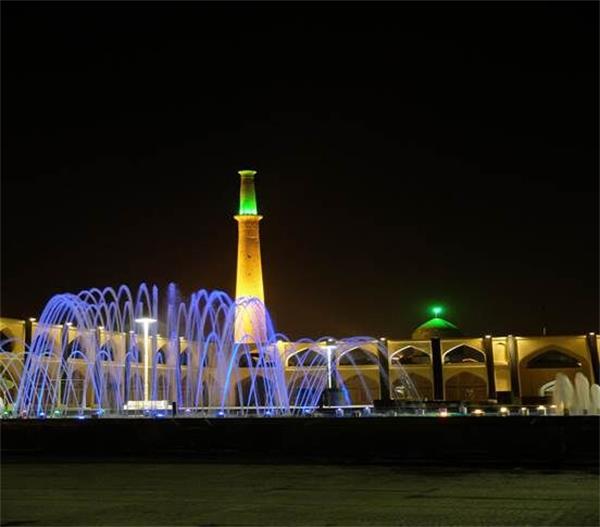- CURRENT LOCATION: HOME
- >> About Shaanxi
- >> Global Associations
- >> Sister Cities
- >>
- Xi'an
Isfahan (Iran)
2017-04-15 12:51:34 , Source : The Government Website of Shaanxi Province
Isfahan, historically also rendered in English as Ispahan, Sepahan, Esfahan or Hispahan, is the capital of Isfahan Province in Iran, located about 340 kilometres (211 miles) south of Tehran.
The Greater Isfahan Region had a population of 3,793,104 in the 2011 Census, the second most populous metropolitan area in Iran after Tehran. The counties of Isfahan, Borkhar, Najafabad, Khomeynishahr, Shahinshahr, Mobarakeh, Falavarjan, Tiran o Karvan, Lenjan and Jay all constitute the metropolitan city of Isfahan.
Isfahan is located on the main north–south and east–west routes crossing Iran, and was once one of the largest cities in the world. It flourished from 1050 to 1722, particularly in the 16th and 17th centuries under the Safavid dynasty, when it became the capital of Persia for the second time in its history. Even today, the city retains much of its past glory. It is famous for its Persian–Islamic architecture, with many beautiful boulevards, covered bridges, palaces, mosques, and minarets. This led to the Persian proverb "Esfahān nesf-e- jahān ast" (Isfahan is half of the world).
The Naghsh-e Jahan Square in Isfahan is one of the largest city squares in the world. It has been designated by UNESCO as a World Heritage Site. The city also has a wide variety of historic monuments and is known for the paintings, history and architecture.
Isfahan City Center is also the 5th largest shopping mall in the world, which is located in this city, mixing the traditional isfahanian architecture with the modern one.
Geography and climate
The city is located in the lush plain of the Zayanderud River, at the foothills of the Zagros mountain range. The nearest mountain is Mount Soffeh (Kuh-e Soffeh) which is situated just south of Isfahan. No geological obstacles exist within 90 kilometres (56 miles) north of Isfahan, allowing cool northern winds to blow from this direction. Situated at 1,590 metres (5,217 ft) above sea level on the eastern side of the Zagros Mountains, Isfahan has an arid climate (Köppen BWk). Despite its altitude, Isfahan remains hot during the summer with maxima typically around 35 °C (95 °F). However, with low humidity and moderate temperatures at night, the climate can be very pleasant. During the winter, days are mild while nights can be very cold. Snow has occurred at least once every winter except 1986/1987 and 1989/1990.
Bridges
The Zayande River starts in the Zagros Mountains, flows from west to east through the heart of Isfahan, and dries up in the Gavkhooni wetland.
The bridges over the river include some of the finest architecture in Isfahan. The oldest bridge is the Shahrestan bridge or "Pol-e Shahrestan", whose foundations was built by the Sasanian Empire (3rd-7th century Sassanid era) and has been repaired during the Seljuk period. Further upstream is the "Pol-e Khaju", which was built by Shah Abbas II in 1650. It is 123 metres (404 feet) long with 24 arches, and also serves as a sluice gate.
The next bridge is the "Pol-e Chubi". It was originally built as an aqueduct to supply the palace gardens on the north bank of the river. Further upstream again is the Si-o-Seh Pol or bridge of 33 arches. Built during the rule of Shah Abbas the Great, it linked Isfahan with the Armenian suburb of New Julfa. It is by far the longest bridge in Isfahan at 295 m (967.85 ft).
Sports
Both Zob Ahan and Sepahan are the only Iranian clubs to reach the final of the new AFC Champions League.
Isfahan has three association football clubs that play professionally. These are Sepahan Isfahan, Zob Ahan Isfahan, and Giti Pasand.
Giti Pasand also has a futsal team, Giti Pasand FSC, one of the best teams in Asia and Iran. They won the AFC Futsal Club Championship in 2012 and were runners-up in 2013.

Government Organizations



Other Links

Copyright@www.shaanxi.gov.cn All Rights Reserved
Registration Number:陕ICP备10004160号
